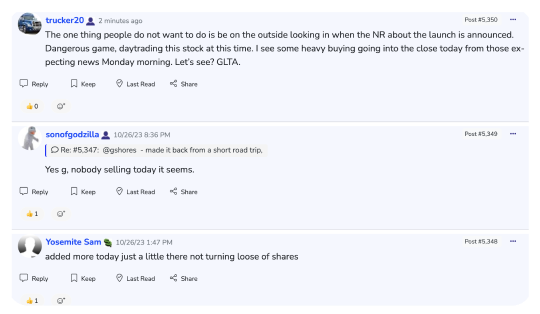| Followers | 200 |
| Posts | 25172 |
| Boards Moderated | 0 |
| Alias Born | 04/03/2010 |
Wednesday, April 20, 2022 4:47:41 PM
Also, last night I posted this on Twitter.
1/ Re $NWBO and #DCVaxL aka "ATL-DC" in brief:#DrLindaLiau, principal investigator for a Phase 3 #DCVaxL trial recently gave a lecture covering the #DCVaxLComboTrial with #Keytruda.
— biosectinvestor (@biosectinvestor) April 20, 2022
I included this screen shot from Dr. Liau's March 31, 2022 presentation at University of Miami:

With the further explanation:
"In reference to the combination, the slide clearly states at the bottom of the boxed section, "Induction (DCVax) of T cell response + inhibition of PD-1/PD-L1 interactions (anti-PD-1) leads to TIM upregulation"."
The Danish Dude further added a link in another thread later, which is more official:
https://trp.cancer.gov/spores/abstracts/ucla_brain.htm#h03
Project 1: Active immunotherapy combined with checkpoint modulation for glioblastoma
Project Co-Leaders:
Robert M. Prins, PhD (Basic Co-Leader)
Linda M. Liau, MD, PhD, MBA (Clinical Co-Leader)
The overall goals of this research project are to investigate mechanisms of immune evasion following treatment with dendritic cell (DC) vaccines, and to develop rational combinations of immunotherapeutic strategies to overcome the immunosuppressive milieu of the brain tumor microenvironment. Our previous work strongly suggested that, in addition to inducing T-cell infiltration into brain tumors, DC vaccination may also create a pro-inflammatory environment within the tumor that induces the immigration of immunoregulatory antigen presenting cells (defined herein as iAPC) expressing high levels of PD-L1 and IL-10. These cells are phenotypically similar to the iAPC that dominantly attenuate the T-cell response to chronic viral infection, and may counteract the effective anti-tumor T-cell responses induced by DC vaccination within the tumor microenvironment via a mechanism involving PD-L1/PD-1. Furthermore, inhibition of iAPC using an anti-PD-1 mAb or a CNS-penetrant CSF-1R inhibitor (PLX-3397) in conjunction with tumor lysate-pulsed DC vaccination (DCVax-L), resulted in significantly prolonged survival in tumor-bearing animals with large, well-established intracranial (i.c.) gliomas. We therefore postulated that clinically relevant anti-tumor cellular immunity against GBM must have two components: 1) significant induction of tumor-specific tumor-infiltrating lymphocytes (TIL); and 2) blockade of iAPC function within the tumor microenvironment. Our hypothesis is that the local cellular interactions between iAPC and T lymphocytes within the tumor microenvironment will be a critical factor influencing the efficacy of immunotherapies in glioblastoma patients. A better understanding of the biology of these cells should provide insight into more effective ways to induce therapeutic anti-tumor immune responses for this deadly type of brain tumor.
The three Specific Aims of this project are:
Aim 1: To understand the mechanisms by which iAPCs limit glioma-specific anti-tumor immune responses induced by active immunotherapy
Aim 2: To evaluate the efficacy of combining tumor lysate-pulsed DC vaccination (to induce TILs into the tumor) with immune checkpoint inhibition (to block iAPC function) in pre-clinical models in vivo, and explore the use of novel PET tracers as an imaging biomarker of response.
Aim 3: To develop predictive immunological and imaging biomarkers of response in recurrent glioblastoma patients enrolled in a Phase II clinical trial of DCVax-L +/- Nivolumab.
Proposed schematic of how non-neoplastic cells can be effectively targeted to influence clinically relevant anti-tumor immunity and immunotherapy
The importance of PD-1/PD-L1 in iAPC-mediated immune suppression. Proposed schematic of how non-neoplastic cells can be effectively targeted to influence clinically relevant anti-tumor immunity and immunotherapy
Yup, you're right.
— 🇩🇰 The Danish Dude 🇬🇱 (@FlemmingBruce) April 20, 2022
The combo trial with Keytruda and the text mentions DCVax-L
SPECIFICALLY
Game over mr. Feuerstein!https://t.co/Nh58M3BBLs pic.twitter.com/SdrJP88yBE

| Volume: | - |
| Day Range: | |
| Bid: | 0.22 |
| Ask: | 0.232 |
| Last Trade Time: | |
| Total Trades: |
Recent NWBO News
- Form 10-K - Annual report [Section 13 and 15(d), not S-K Item 405] • Edgar (US Regulatory) • 03/31/2025 09:23:24 PM
- Investors Watching Two Small-Caps for News on Potential Major Advancements in Cancer Treatments • AllPennyStocks.com • 01/13/2025 01:56:00 PM
- Form 424B5 - Prospectus [Rule 424(b)(5)] • Edgar (US Regulatory) • 12/26/2024 10:07:47 PM
- Form 8-K - Current report • Edgar (US Regulatory) • 12/26/2024 09:29:14 PM
- Form 10-Q - Quarterly report [Sections 13 or 15(d)] • Edgar (US Regulatory) • 11/12/2024 09:10:53 PM
- Form 8-K - Current report • Edgar (US Regulatory) • 11/01/2024 09:24:13 PM
- Form 4 - Statement of changes in beneficial ownership of securities • Edgar (US Regulatory) • 09/03/2024 08:01:40 PM
- Form 4 - Statement of changes in beneficial ownership of securities • Edgar (US Regulatory) • 08/13/2024 08:01:24 PM
- Form 10-Q - Quarterly report [Sections 13 or 15(d)] • Edgar (US Regulatory) • 08/09/2024 09:06:07 PM
- Form 4 - Statement of changes in beneficial ownership of securities • Edgar (US Regulatory) • 08/08/2024 08:30:09 PM
- Form 8-K - Current report • Edgar (US Regulatory) • 08/02/2024 02:42:28 PM
- Form 4 - Statement of changes in beneficial ownership of securities • Edgar (US Regulatory) • 07/30/2024 11:49:38 PM
- Biophma Announces Exclusive In License for Dendritic Cell Technology, Sending Shares Higher • AllPennyStocks.com • 06/17/2024 04:40:00 PM
- Form 8-K - Current report • Edgar (US Regulatory) • 06/04/2024 09:11:16 PM
- Form DEF 14A - Other definitive proxy statements • Edgar (US Regulatory) • 06/03/2024 09:22:55 PM
- Form PRE 14A - Other preliminary proxy statements • Edgar (US Regulatory) • 05/22/2024 08:13:36 PM
- Form 10-Q - Quarterly report [Sections 13 or 15(d)] • Edgar (US Regulatory) • 05/10/2024 09:04:57 PM
NorthStrive Biosciences Inc. Signs Amended Licensing Agreement with Existing Licensor, Aims to Capture Animal Health Market • ELAB • Mar 27, 2025 11:20 AM
LaFleur Minerals Announces Memorandum of Understanding with Granada Gold on Milling Assessment for the Granada Gold Project Using the Beacon Gold Mill • LFLRF • Mar 27, 2025 8:40 AM
Nightfood Holdings (NGTF) Issues Shareholder Update on Imminent Strategic Acquisitions and Rapid Expansion in AI-Powered Hospitality Automation • NGTF • Mar 27, 2025 8:30 AM
ConnectM Secures Landmark Home and Building Electrification Project in India, Marking Strategic International Expansion • CNTM • Mar 27, 2025 7:05 AM
$SYNX - Could Silynxcom Be the Next 1000% Israeli Defense Tech Rocketship? (NYSE: SYNX) • SYNX • Mar 26, 2025 12:15 PM
ConnectM Issues Stockholder Letter from CEO & Chairman • CNTM • Mar 26, 2025 12:14 PM








